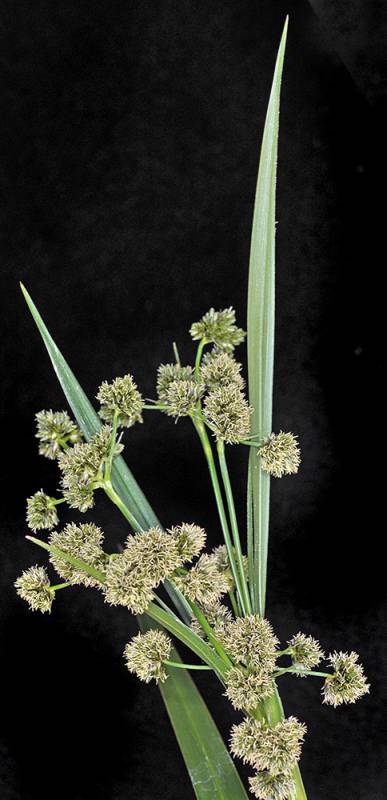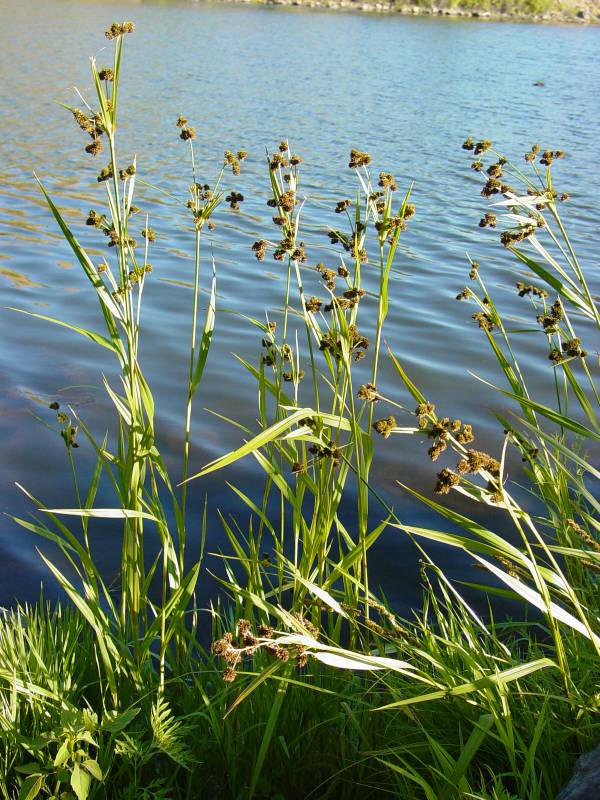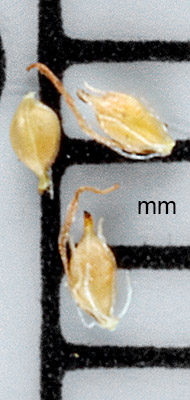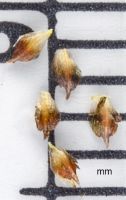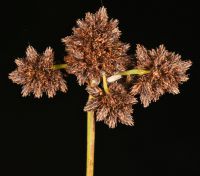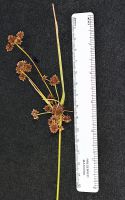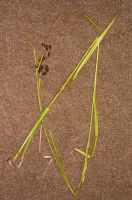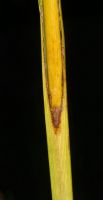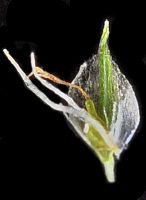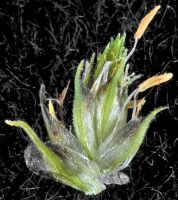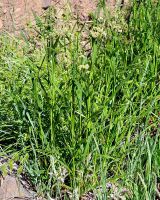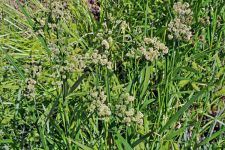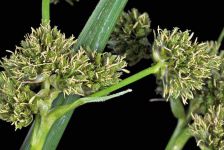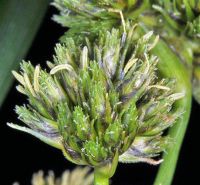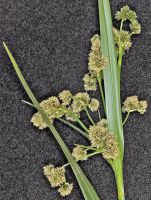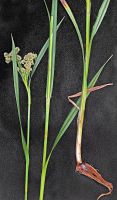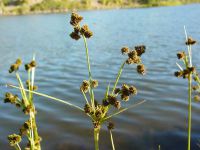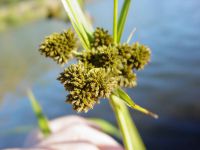Distribution: Occurring east of the Cascades crest in Washington; southern British Columbia to Oregon, east to the Great Plains, Great Lakes region, and northeastern U.S.
Habitat: Wet, low ground, from the lowlands to middle elevations in the mountains.
Flowers: June-August
Origin: Native
Growth Duration: Perennial
Conservation Status: Review Group 1 in Washington (WANHP)
Pollination: Wind
Coarse, herbaceous perennials from short, stout rhizomes, the stems loosely clustered, triangular, 6-15 dm. tall.
Stem leaves several, the blades flat, grass-like, 6-15 mm. wide and up to several dm. long, the sheaths greenish or pale.
Inflorescence a simple or compound terminal cyme, with very numerous, sessile spikelets 3-4 mm. long, in dense, often compound clusters that are at least 1 cm. thick; inflorescence subtended by several unequal, sheathless bracts, the largest of these about 1 dm. long; flowers subtended by translucent, greenish-black scales with a thickened, greenish or brownish midrib which is exerted as an awn 0.5 mm. long; perianth bristles usually 6, slender, no longer than the achene; stamens 3; style trifid.
Achenes unequally triangular, 1.0-1.2 mm. long.
Publication: Rhodora. 8: 163. 1906. 1906.
PNW Herbaria: Specimen records of Scirpus pallidus in the Consortium of Pacific Northwest Herbaria database
WA Flora Checklist: Scirpus pallidus checklist entry
OregonFlora: Scirpus pallidus information
E-Flora BC: Scirpus pallidus atlas page
CalPhotos: Scirpus pallidus photos

